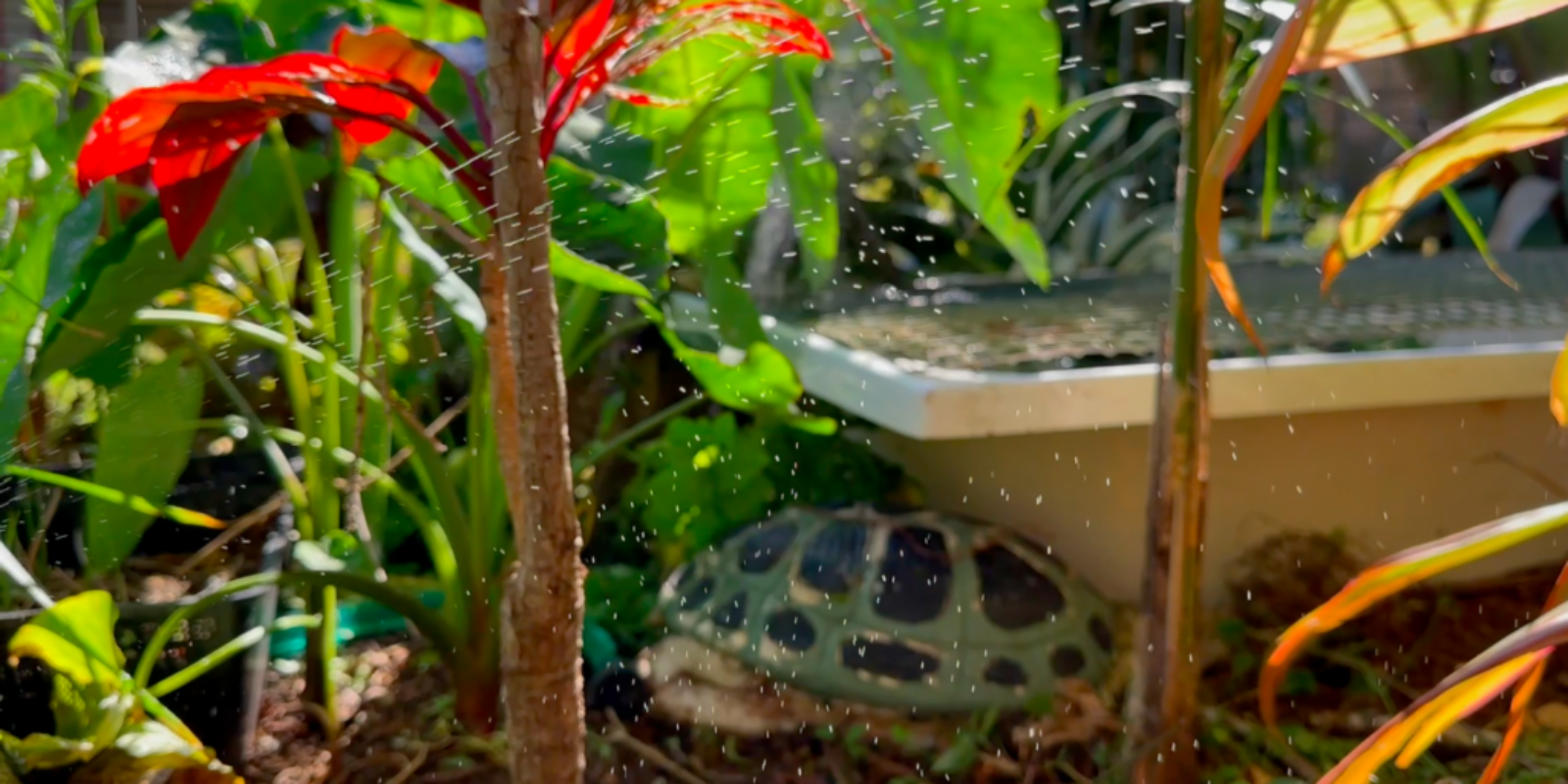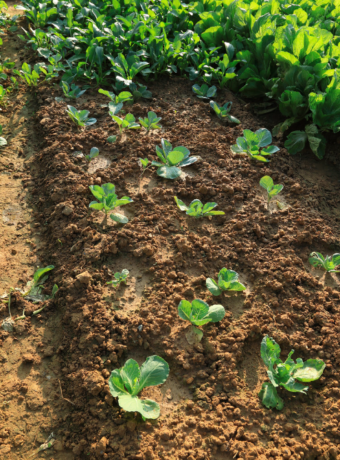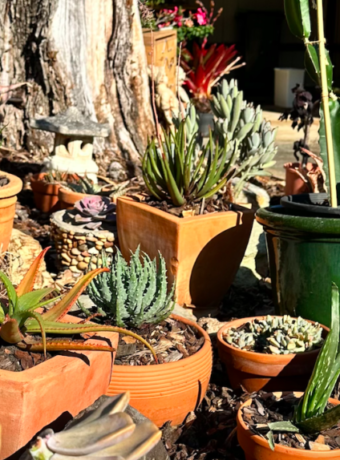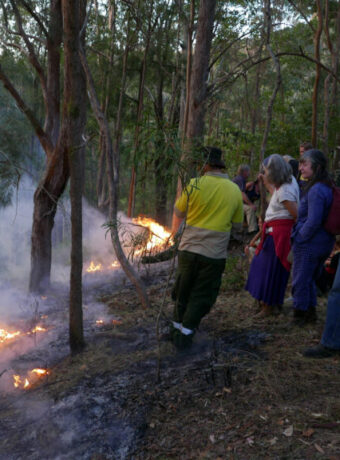A microclimate refers to the distinct climate conditions within a relatively small area, often differing from the surrounding region due to specific local factors. These factors can include topography, vegetation, land use, and human activities. Microclimates can vary significantly even within a single urban area, leading to diverse temperature, humidity, wind patterns, and other atmospheric conditions.
By learning how to create microclimates in your garden, you can create the ideal growing conditions that allow you to grow a wider variety of plants, grow them more effectively, with less effort.
Here are some examples of specific microclimates:
- Urban Heat Island: Cities tend to be warmer than their surrounding rural areas due to heat-absorbing buildings and concrete, resulting in a microclimate with higher temperatures.
- Mountain Valleys: Valleys between mountains can have distinct microclimates, with cooler temperatures and increased moisture compared to the surrounding slopes.
- Coastal Microclimates: Coastal areas can have milder temperatures and higher humidity due to the moderating influence of the ocean.
- Desert Oasis: In arid deserts, oases can provide localised microclimates with more vegetation and water due to underground springs.
- Vineyard Rows: Rows of grapevines in vineyards can create distinct microclimates with variations in temperature and sunlight exposure.
These examples illustrate how various factors, including topography, proximity to water bodies, vegetation, and human activities, can create unique microclimates within larger regions.
There are a range of benefits of creating microclimates in your permaculture garden, including:
- Increased Growth, Diversity & Health: By manipulating temperature and moisture levels, gardeners can extend the growing season for certain plants that might not thrive in the natural climate of the region. Tailoring the environment to meet the specific needs of plants can lead to healthier growth, increased growing seasons, and better overall plant health.
- Protection from Extreme Weather: Microclimates can offer protection from harsh weather conditions, such as strong winds, frost, or excessive heat, helping plants thrive despite adverse weather events.
- Reduced Water Usage: Well-designed microclimates can help conserve water by improving water retention in the soil and minimising evaporation.
- Biodiversity Enhancement: Creating microclimates can attract a diverse range of plant and animal species, contributing to overall biodiversity and ecological health. Designing microclimates can contribute to local ecological restoration efforts by creating pockets of habitat for native plants and wildlife.
How to Create a Microclimate
- Topography: The shape and elevation of the land can influence temperature variations. For instance, valleys might trap cold air, resulting in colder microclimates, while slopes may experience more air movement and variation in temperatures.
- Vegetation: Plants provide shade, moisture, and heat absorption, creating cooler and more humid microclimates. Vegetation can also affect wind patterns and help retain moisture in the soil.
- Buildings and Structures: Urban structures can absorb and radiate heat, leading to “urban heat islands.” Building orientation, height, and materials used can impact temperature and air circulation.
- Water Bodies: Bodies of water, such as ponds, lakes, or rivers, can moderate temperatures by releasing stored heat or cooling the surroundings through evaporation.
- Pavement and Surfaces: Hard surfaces like concrete and asphalt absorb and radiate heat, contributing to warmer microclimates known as “heat islands.” Light-coloured or reflective surfaces can mitigate this effect.
- Wind Patterns: Local wind patterns can be influenced by nearby structures and natural features, affecting temperature and humidity.

A permaculture food forest is not a microclimate itself but rather a designed ecological system that mimics the structure and function of natural forests, but with a focus on producing food, herbs, and other useful plants. Within a permaculture food forest, various microclimates can emerge due to the arrangement of plants, trees, and other elements. These microclimates can include:
- Canopy Shade: Tall fruit and nut trees can create a microclimate beneath their canopy, offering shade and cooler temperatures compared to the surrounding area. This is often ideal for shade-loving plants.
- Understory: Understory plants in a food forest experience filtered sunlight and may have their own microclimate with moderated temperature and humidity.
- Edge Zones: The transition areas between different sections of a food forest, such as the edge between a meadow and a forested area, can have their own microclimates, attracting unique species.
To create microclimates in your garden, consider the following steps:
- Site Analysis: Understand the existing microclimates in the garden by assessing factors like sunlight exposure, wind patterns, temperature variations, and moisture levels.
- Plant Selection: Choose a variety of plants that are suited to different microclimates within the garden. Group plants with similar requirements to optimise their growth.
- Windbreaks: Use windbreaks like trellises, fences, or hedgerows to create sheltered areas and reduce wind impact on plants.
- Shade Structures: Install shade structures like pergolas, arbors, or shade cloth to protect plants from excessive sunlight, preventing heat stress.
- Water Features: Incorporate small water features to introduce moisture and cool the air through evaporation. These features can also contribute to a more humid microclimate.
- Mulching: Apply organic mulch to retain soil moisture, regulate temperature, and suppress weed growth.
- Companion Planting: Arrange plants that have symbiotic relationships to benefit each other. For example, taller plants can provide shade for smaller ones.
Creating Miroclimates in My Garden
The first was for my bromeliads — there are a lot of bromeliads here, and not only was I struggling to look after them when they were scattered around different parts of my garden, but bromeliads often prefer specific microclimates that mimic their native environments, which can include:
- Tropical Rainforests: Many bromeliads are native to tropical rainforests, where they thrive in warm and humid conditions with consistent moisture. They often grow on trees (epiphytic bromeliads) and receive filtered sunlight through the forest canopy.
- Cloud Forests: Some bromeliads are found in cloud forests, which are characterised by cooler temperatures, high humidity, and frequent mist or cloud cover. They often grow on trees and rocks in these environments.
The main variables I needed to consider was shade or dappled light and humidity or frequent moisture. I also added some other plants like begonias, as they thrive in areas with filtered sunlight or partial shade. They can tolerate some morning sun but generally prefer protection from the intense afternoon sun. Begonias also do well in regions with moderate to high humidity levels. They appreciate the moisture in the air, which can help prevent their soil from drying out too quickly.

I also created a microclimate to grow crops like taro— taro prefers:
- High Humidity: Taro prefers high humidity levels. It often grows well in regions with consistent moisture in the air.
- Consistent Rainfall or Irrigation: Taro is a water-loving plant and requires consistent moisture in the soil. It often grows in areas with regular rainfall or where it can be irrigated adequately.
- Partially Shaded to Full Sunlight: While taro can tolerate partial shade, it generally prefers areas with filtered sunlight or dappled shade. It can grow in full sun but may require more water in such conditions.
- Well-Draining, Water-Retentive Soil: Taro prefers well-draining soils that retain moisture. Loamy soils or soils with a high organic matter content are often suitable.
- Protection from Strong Winds: Taro plants have large, tender leaves that can be damaged by strong winds. Planting them in a sheltered location can help protect them.
In my water garden there is constant irrigation to keep the soil moist, and the garden is located in a corner where it receives some sun and shade. The bathtub (that I used for the large pond) also acts as a wind break to protect the tarot from harsh winds.

Another microclimate I created was to grow onions and potatoes, which are both cool-season crops that have specific microclimate preferences:
- Cool Temperatures: Onions and potatoes are both are cool-season crops and thrive in temperatures between 10°C to 24°C (onions) and 7°C to 21°C (potatoes)
- Full Sun: They both prefer full sun but can tolerate some light shade.
- Well-Draining Soil: Onions require well-draining soil to prevent waterlogged roots and potatoes need loose, well-draining soil with good aeration.
- Moderate Humidity: Onions don’t require high humidity, but they do prefer moderate levels of moisture— potatoes also require moderate soil moisture but can tolerate higher humidity levels.
- Protection from Frost: both are sensitive to frost, but that is not a problem for me where I live
In order to create a microclimate for these plants to thrive, I planted them in a nice well draining garden bed, with plenty of mulch and frequent irrigation to ensure the soil stays moist and cool. The garden bed is north facing, so it receives full sun throughout the day, but there are large structures and trees that block it from receiving harsher direct sunlight in the afternoon. There are also plenty of ground covers which will regulate a cool soil temperature, retain moisture, and provide habitat for beneficial organisms.



